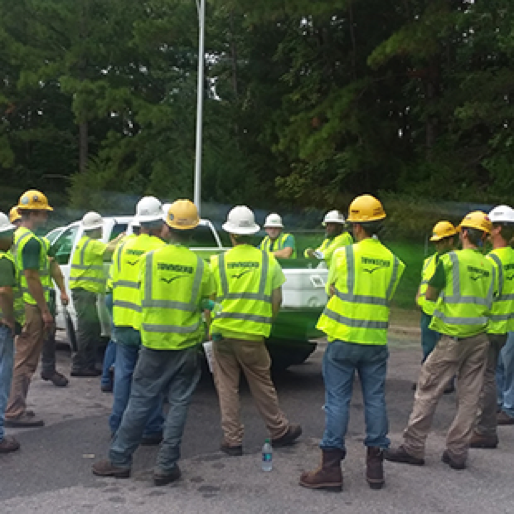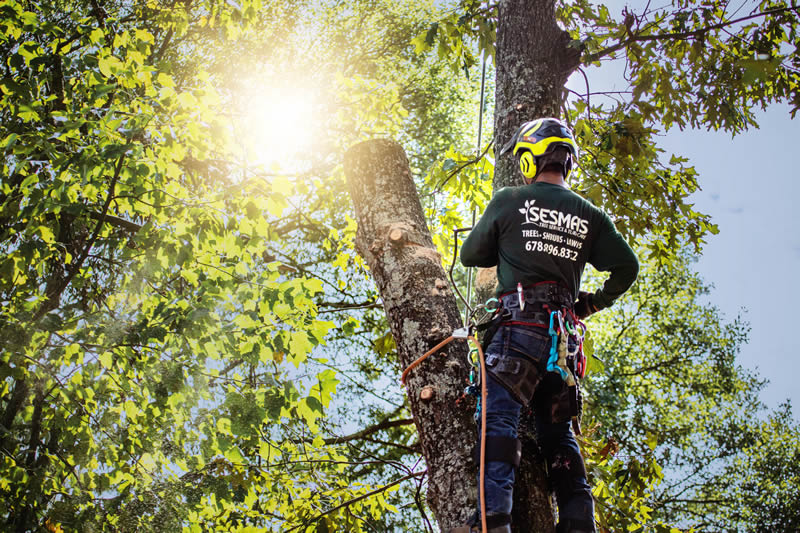Comprehending the Relevance of Tree Conservation and Preservation Practices in Urban Locations
In the dynamic landscape of city settings, trees frequently stand as silent guardians, providing a multitude of advantages that expand much beyond their aesthetic appeal. Understanding the importance of tree conservation and preservation techniques in these locations is not simply an ecological consideration but an alternative approach to cultivating sustainable and resilient communities. As we discover the interwoven textile of ecological, social, and economic benefits that metropolitan trees provide, it becomes noticeable that their preservation is pivotal for the health of future and present generations. Allow us begin on a trip to reveal the crucial function that trees play fit the urban landscapes of tomorrow.
Ecological Benefits of Trees in Cities
Trees in city areas play an essential duty in offering various ecological advantages, adding to the general health of city slicker. One considerable advantage is the enhancement of air quality. Trees function as all-natural filters, soaking up pollutants such as carbon monoxide, sulfur dioxide, and nitrogen dioxide, and launching oxygen right into the atmosphere. This process assists minimize the focus of damaging gases, making the air cleanser and much healthier for homeowners.
In addition, trees add to water administration by lowering stormwater drainage and soil erosion. Their root systems soak up excess water, avoiding flooding and filtering system toxins prior to they reach water bodies. This natural process aids maintain water quality and secures aquatic ecological communities in urban areas. Overall, the ecological advantages of trees in cities are necessary for producing sustainable and comfortable urban settings.
Social Value of Urban Tree Preservation
In contemporary metropolitan landscapes, the preservation of trees holds considerable social relevance for promoting area health and boosting high quality of life. Urban tree preservation plays a vital role in producing rooms for social communication and area involvement. Trees supply meeting place for individuals, such as parks and green areas, where neighborhoods can integrate for leisure tasks, get-togethers, and leisurely strolls. The existence of trees in urban settings has actually been connected to minimized levels of stress, enhanced mental health and wellness, and raised sensations of wellness among homeowners. Furthermore, trees add to the visual appeals of communities, developing aesthetically attractive surroundings that improve the general livability of city locations.

Economic Value of Tree Preservation
The preservation and conservation of metropolitan trees provide significant financial benefits that contribute to the general financial wellness of neighborhoods and cities. Urban trees offer a vast array of economic benefits that positively influence local economic situations. One substantial economic advantage of tree conservation is the boost in building values. Trees boost the aesthetic appeal of communities, leading to greater property worths and bring in potential purchasers or lessees. Furthermore, city trees help decrease power prices by supplying color in the summer and working as windbreaks in the winter, thus decreasing the demand for heating and cooling systems.
Furthermore, trees play an essential duty in minimizing stormwater drainage and mitigating the results of flooding, which can lead to price financial savings for cities in terms of facilities maintenance and fixing. Urban trees also add to improved air top quality by launching and taking in pollutants oxygen, leading to possible savings in medical care costs connected with respiratory ailments. By identifying and spending in the financial worth of tree preservation, cities can promote sustainable advancement, enhance lifestyle, and produce more resistant city atmospheres.
Approaches for Lasting Urban Tree Administration
A thorough method to lasting metropolitan tree administration involves incorporating diverse methods that prioritize lasting environmental wellness and neighborhood wellness. Applying tree inventories and assessments is critical to understand urban tree populations, their health and wellness, and upkeep demands.
Area engagement plays a critical function in lasting city tree monitoring. Educating locals regarding the advantages of trees, organizing tree planting events, and involving volunteers in tree care activities promotes a feeling of possession and stewardship. Cooperation between regional federal government, ecological companies, and locals is vital to developing and applying reliable tree management plans.
Spending in eco-friendly infrastructure, such as city forests and green roofs, can provide numerous advantages, internet including improved air top quality, stormwater monitoring, and metropolitan heat island mitigation. RC Property Services Guilford CT. Integrating trees right into metropolitan planning and layout procedures guarantees that trees are valued as vital components of a healthy and durable metropolitan environment
Area Involvement in Tree Conservation
Neighborhood involvement is a basic element in fostering lasting urban tree monitoring methods and guaranteeing the long-term health and preservation of metropolitan tree populations. Engaging the area in tree preservation efforts can lead to increased recognition, gratitude, and stewardship of trees within city locations. When locals proactively take part in tree planting, conservation, and upkeep initiatives, they create a feeling of ownership and pride in their neighborhood environment.
Area participation likewise advertises social communication and cooperation among citizens, neighborhood authorities, and environmental organizations, promoting a my site common responsibility for metropolitan tree preservation. By arranging tree growing events, academic workshops, and volunteer possibilities, communities can work with each other to enhance the city tree canopy and create greener, healthier cities. Entailing residents in decision-making processes relating to tree management makes sure that varied point of views and neighborhood knowledge are considered, leading to a lot more reliable and sustainable conservation practices. Eventually, area participation plays a vital role in structure durable and successful metropolitan forests for future generations to take pleasure in.
Final Thought
Finally, metropolitan tree preservation and preservation methods play a crucial duty in boosting the environmental, social, and economic health of cities. By acknowledging the value of trees in urban locations and carrying out sustainable administration methods, neighborhoods can take pleasure in the countless advantages that his comment is here trees supply. It is imperative for stakeholders to proactively get involved in tree preservation initiatives to ensure a greener and much healthier metropolitan environment for present and future generations.
